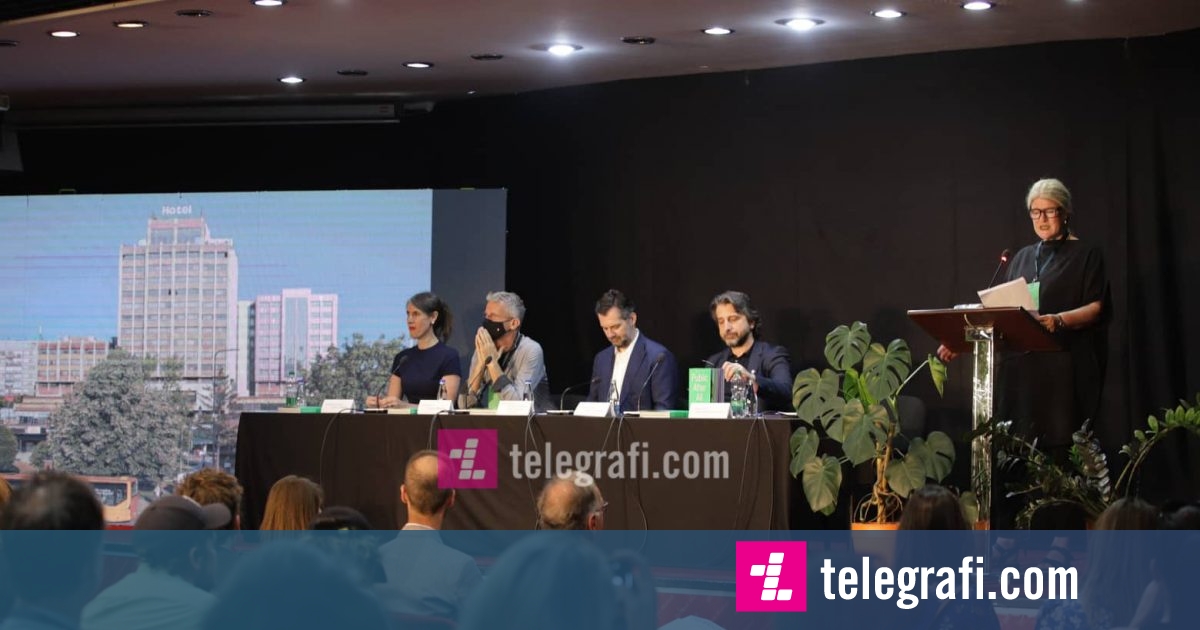Today, July 21, Manifesta is pleased to announce that the 14th edition of the European Nomadic Biennale has opened in Pristina, Kosovo.
From July 22 to October 30, Manifesta 14 Prishtina presents a 100-day program consisting of numerous artistic and urban interventions, performances, events and workshops.
The Manifesta 14 program responds to the call of the city of Pristina, but also to the global need to restore and rethink public spaces.
An Urban Vision and urban interventions by CRA-Carlo Ratti Associati, a series of citizen consultations and in-depth research projects by Manifesta 14's Education team, have inspired a multi-layered artistic and urban program.
Entitled It Matters What Worlds the World Worlds: How to Tell Stories Differently, the program was developed with the Manifesta 14 team by Creative Mediator Catherine Nichols in close collaboration with local collectives, artists, researchers, architects and activists.
Key statistics
Manifesta 14 has a fundamentally local program: of the 103 participants, including 25 collectives, 39% originate from Kosovo, the largest ever number of local participants of all Manifesta editions.
Another 26% of the participants are from the Western Balkans, which means that 65% of the total participants come from the region.
Furthermore, 56% of individual participants are women and 3% are non-binary.
The opening conference of the Biennale Manifesta 14 in Pristina
(Photo: Ridvan Slivova/Telegrafi)
Manifesta spaces 14 Prishtina
Across 25 public and semi-public spaces in Pristina, from the Ottoman-era Grand Hammam to the Yugoslavian-era Palace of Youth and Sports, the program is best explored by Manifesta's 14 trails. Through these trails visitors can see the ongoing development urban area of this new, social and dynamic capital.
Through its engagement with a variety of different places – each with its own unique stories, Manifesta 14 Prishtina draws attention to the need and use of public space within urban landscapes.
Key urban interventions include the Green Corridor, which connects the two sides of the city with a sustainable mobility path and opens access to the eco-urban learning lab developed by raumlaborberlin for Manifesta 14 Pristina in the former Brick Factory.
For the first time in Manifesta's three-decade history, Manifesta 14 has created a permanent interdisciplinary cultural institution, the Center for Narrative Practice, located in the premises of the former "Hivzi Sulejmani" library.
This is the result of a significant change in Manifesta's institutional approach, focusing on creating a long-term impact on the local infrastructure and cultural ecosystem in the Host City. With this edition, the European Nomadic Biennale has also formed a regional network and event program through Manifesta 14 Prishtina – The Western Balkans Project, connecting Pristina's program with those of cultural partners coming from the entire region.
located in the premises of the former "Hivzi Sulejmani" library.
This is the result of a significant change in Manifesta's institutional approach, focusing on creating a long-term impact on the local infrastructure and cultural ecosystem in the Host City. With this edition, the European Nomadic Biennale has also formed a regional network and event program through Manifesta 14 Prishtina – The Western Balkans Project, connecting Pristina's program with those of cultural partners coming from the entire region.
located in the premises of the former "Hivzi Sulejmani" library.
This is the result of a significant change in Manifesta's institutional approach, focusing on creating a long-term impact on the local infrastructure and cultural ecosystem in the Host City. With this edition, the European Nomadic Biennale has also formed a regional network and event program through Manifesta 14 Prishtina – The Western Balkans Project, connecting Pristina's program with those of cultural partners coming from the entire region.
The Director of the Manifesto, Hedwig Fijen
(Photo: Ridvan Slivova/Telegraph)
The four pillars
The Manifesta 14 program is centered around four pillars: 1) the Center for Narrative Practice with its Educational space called Oaza, 2) the former Brick Factory,
3) Grand Hotel Prishtina and its thematic exhibition on seven floors and 4) the paths connecting the 25 spaces between artistic and urban interventions spread throughout the city.
All of these are woven into a well-composed itinerary that brings together all the interdisciplinary elements of Manifesta 14 Prishtina into a cohesive program, allowing visitors to get to know the stories of the places in which the artistic interventions are presented.
Around these four pillars, the program seeks to transform the biennial model into a participatory and collaborative catalyst for social change.
The opening conference of the Biennale Manifesta 14 in Pristina
(Photo: Ridvan Slivova/Telegrafi)
Kosovo and its relationship with Europe
Manifesta 14 Prishtina's artistic and urban interventions, including the thematic exhibition entitled The Grand Scheme of Things, ask the visitor to consider the political thrust of the narrative.
In a world where ideas are freely exchanged, in a biennale full of stories – what does it mean for a country's youth and artistic community to live with travel restrictions in the Schengen area?
The lack of visa liberalization means that Kosovo's cultural and artistic communities face the most fundamental obstacles, which curtail their capacity to develop and maintain constructive dialogue with the rest of Europe, and also with the rest of the world.
/Telegraph/
The opening conference of the Biennale Manifesta 14 in Pristina
(Photo: Ridvan Slivova/Telegraf)
